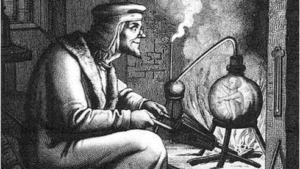The question of how to create life does not just go back to Mary Shelley’s Frankenstein, when the eponymous character used forbidden science to create life. Medieval scientists tried for centuries to create miniature artificial people using human semen mixed with other substances and implanted in an animal womb!
The homunculus is first referred to in alchemical writings of the 16 th century. It is likely, however, that this concept is older than these writings. The idea that miniature fully-formed people can be created has been traced to the early Middle Ages (400 to 1000 AD), and is partly based on the Aristotelian belief that the sperm is greater than the ovum in its contribution to the production of offspring.
The first known account of the production of the homunculus is said to be found in an undated Arabic work called the Book of the Cow , purportedly written by the Greek philosopher Plato himself.
The materials required for the creation of the homunculus include human semen, a cow or ewe and animal blood, whilst the process includes the artificial insemination of the cow / ewe, smearing the inseminated animal’s genitals with the blood of another animal, and feeding it exclusively on the blood of another animal.
Read more: Ancient Origins
Ask me anything
Explore related questions





